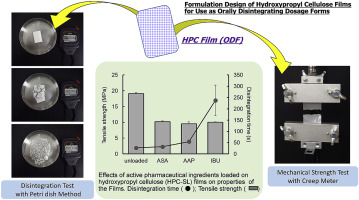- Home
- Blog
- News
- Basics
- Sources
- Agencies, Regulatory & Organisations
- CERSI Excipients Browser
- Excipient Report
- Excipient DMF List
- EXCiPACT Certified Companies
- Excipient Documentation
- Excipient EINECS Numbers
- Excipient E-Numbers
- FDA Inactive Ingredient List
- FDA GRAS Substances (SCOGS) Database
- IPEC Americas
- USP - U.S. Pharmacopeia
- Definitions
- Whitepapers / Publications
- Supplier
- Services
- Media
- Events
- 1st pharmaexcipients Poster Award
- Event Calendar
- Events featured by pharma-excipients
- 4th Annual Formulation & Drug Delivery Congress
- DDF Summit
- ExcipientFest Americas
- ExcipientFest Asia
- Global CompliancePanel
- International Conference and Exhibition on Pharmaceutics & Novel Drug Delivery Systems
- Formulation & Drug Delivery USA Congress
- Laboratory Medicine 2018
- Making Pharmaceuticals Europe
- Making Pharmaceuticals Exhibition
- Pharma Integrates
- PharmaExcipients China @CPhI China
- TTC Technology Training Center
- Jobs
- Online Sourcing
- Contact
04. October 2018
Praziquantel is an antiparasitic drug used for decades. Currently, the praziquantel commercial preparation is a racemic mixture, inwhich only the levo-enantiomer possesses anthelmintic activity. The knowledge of its properties in the solid state and other chemical-physical properties is necessary for improving its efficacy andapplications. Drug solid dispersions were prepared with calcium carbonate at 1:5 drug to excipient weight ratio by solventevaporation method. Then, the modification of the...
08. May 2018
Hydroxypropyl cellulose (HPC) is a water-soluble polymer used as a binder during pharmaceutical tableting and granulation. HPC is also known as a base material for pharmaceutical film by virtue of its film formability with excellent plasticity. The aim of this study was to assess the applicability of HPC to orally disintegrating film (ODF) and to investigate optimization of the ODF formulation of HPC. The effects of the molecular weight of HPC and the addition of active pharmaceutical...
11. October 2016
Orally disintegrating tablets (ODTs) are a preferred dosage form compared with conventional tablets because of the numerous advantages they offer, such as rapid dissolution and fast onset of action. To maintain the porous structure needed for fast dispersion, most current ODT formulations are limited by their mechanical strength. With functionalised calcium carbonate, however, pharmaceutical manufacturers can produce ODTs that offer high mechanical strength while disintegrating twice as fast as...
14. September 2016
Abstract This work investigates whether the solubility of poorly soluble compounds can be improved by using mesoporous magnesium carbonate (MMC) as the drug delivery system. A solvent evaporation method was used to load structurally diverse model drugs (celecoxib, cinnarizine and griseofulvin) into the pores of MMC. The drug-loaded carrier system was then characterized in terms of porosity, crystallinity, and release profiles by a variety of experimental techniques, including X-ray diffraction,...
16. November 2015
See also: First in-vivo biocompatibility study of Upsalite® is published!
27. October 2015
To develop a novel co-processed tablet excipient based on calcium carbonate and hydroxypropyl methylcellulose (HPMC), the central composite design-response surface methodology (CCD-RSM) was applied to optimize the amount of HPMC and the solid content of feed suspensions used for co-spray drying by choosing powder and tablet properties as the evaluation indicators. More
04. October 2015
Calcium carbonate can be 'functionalized' by use of etching agents such as phosphoric acid to create inter- and intra-particle porosity with a range of morphologies. Functionalized calcium carbonate has potential for use as a carrier for the delayed release of actives, such as drugs, plant protection chemicals, and food additives such as flavors. The drug or flavor is released slowly by permeation and diffusion. More
23. September 2015
Carolina Diaz-Quijano explains how it performs in tablets, orally disintegrating tablets, and orally disintegrating granules. More
30. June 2015
In a study published today in the Journal of Pharmaceutical Sciences (link), Professor Strømmes group shows, in collaboration with Associate Professor Christel Bergström's research in pharmacy, that release of pharmaceuticals from Upsalite® can be controlled with great precision by choosing the right size of Upsalite® particles. More
22. June 2015
By Gareth MacDonald+, 22-Jun-2015 Swedish scientists who developed the solubility enhancing nanotech excipient Upsalite say it can also be used to improve delayed release formulations. More See also: http://www.pharma-excipients.ch/2015/06/22/diffusion-controlled-drug-release-from-the-mesoporous-magnesium-carbonate-upsalite-abstract/


